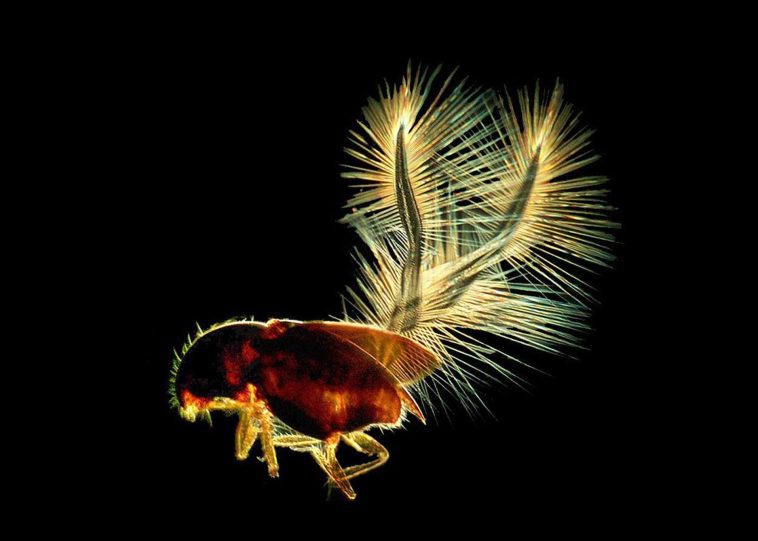Featherwing beetles might be smallest beetles measuring in at mostly under one millimeter, but their size doesn’t stop them from being speedy fliers. These tiny beetles have been found to fly just as fast as other beetles three times their size. Learning more about their flight reminds us that our Creator designed purpose in the tiny details.
Entomologists have been studying the flight patterns and behaviors of these amazing beetles to learn how they seem to defy Newton’s laws. Unlike the wings of other insects, made of membranous material, the featherwing beetles have bristly feather-like wings (hence the name).
According to the study, entomologists created a model using high-speed videography and measurements to learn more about the bristled wings. The captured video is fascinating. These tiny wings have strong friction to fight against, with such a small body, while using two power strokes and two recovery strokes during flight. The wings appear to clap in front of and behind its body. They found that the bristled wings reduce the wing mass when compared to membranous wings. The wings work similarly to a bird feather by not allowing a lot of air escape to through them.
The elytra are the front wings of beetles but primarily serve as protective wing cases for the hindwings. In featherwing beetles, they are also used during flight – acting as brakes and stabilizers. This opening and closing movement of the elytra is unique to the flying style of certain beetles, like the featherwing.
Another distinction in the flight behaviors of featherwing beetles is the way their wings move. The beetle’s wings make a figure-eight pattern in a way that decreases drag and allows the beetle to powerfully propel itself. They share this amazing wing pattern with the tiny hummingbird.
The evolutionary entomologists conducting these studies report that for over 300 million years, these beetles have evolved smaller bodies while maintaining the ability to fly. However, these insects retain their God-given ability to adapt in size based on ecological conditions. It did not take 300 million years.
I’m David Rives.
Truly, the heavens declare the glory of God.





